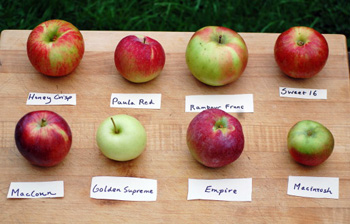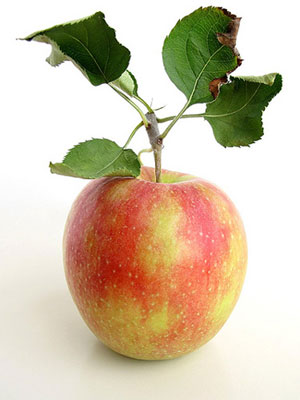 Did you know the "Whoopie pie" is the State Treat of Maine? I had no idea states had designated treats. I'm dying to know what the state treat is here...it better be candy bacon.
Did you know the "Whoopie pie" is the State Treat of Maine? I had no idea states had designated treats. I'm dying to know what the state treat is here...it better be candy bacon.
While making these I started thinking about why these tasty little cakes have such a silly name. I did a little research and found Whoopie pies to be a Pennsylvania Amish and New England phenomenon. I suppose this is why I never had them as a child.
Apparently the Amish women would bake up these little desserts (likely with leftover cake batter) and put them in their husband's lunches. The men would pull out these treats and yell, "whoopie".
So...this is where I laughed out loud. I just don't see a bunch of guys yelling out, "whoopie" for cake. Do you?
Oh well, maybe they did. It was a different time. It just sounds funny. There are also three states that claim to be the birthplace of the Whoopie pie; Maine, New Hampshire and Pennsylvania. This little dessert has quite a history!

 Libby loves apples. Roy does not. Nevertheless, I subjected them both to an apple taste-test last Saturday. They were good sports, even when I suggested they use words like “tangy” and “tart” to describe an apple’s flavor rather than “sour” and “yucky.” Actually, Libby was right there with me through the whole thing, but we noticed Roy was standing next to the compost bucket for most of the time, and I’m not entirely sure he really ate all of his apple portions. (Libby, on the other hand, called for a time-out half way through; I’d forgotten to tell her just to take a bite, not eat the whole wedge.) It didn’t matter that we all gradually lost steam, because the last apple was so crisp and juicy and flavorful and WOW! that it woke us all up and easily claimed it’s spot as number one. It was a Honey Crisp, which probably won’t surprise many of you. This one happened to be Island grown, too, and it was a doozy.
Libby loves apples. Roy does not. Nevertheless, I subjected them both to an apple taste-test last Saturday. They were good sports, even when I suggested they use words like “tangy” and “tart” to describe an apple’s flavor rather than “sour” and “yucky.” Actually, Libby was right there with me through the whole thing, but we noticed Roy was standing next to the compost bucket for most of the time, and I’m not entirely sure he really ate all of his apple portions. (Libby, on the other hand, called for a time-out half way through; I’d forgotten to tell her just to take a bite, not eat the whole wedge.) It didn’t matter that we all gradually lost steam, because the last apple was so crisp and juicy and flavorful and WOW! that it woke us all up and easily claimed it’s spot as number one. It was a Honey Crisp, which probably won’t surprise many of you. This one happened to be Island grown, too, and it was a doozy. For a long time, the closest I had ever come to what I thought was a real fig was the dried kind or Fig Newtons. It wasn't until a family friend gave us a fig tree that I learned figs are actually fresh before they are dried. Not only that, but I discovered that fresh figs were worlds apart from the dried ones. We weren't the only family with a fig tree in the neighborhood. Italian and Portuguese neighbors had them too. That's because figs are native to the Mediterranean region, where they have been revered since ancient and biblical times. You can't not find mention of it in ancient Greek and Roman texts and of course the Bible's creation story. What would we have done without fig leaves?
For a long time, the closest I had ever come to what I thought was a real fig was the dried kind or Fig Newtons. It wasn't until a family friend gave us a fig tree that I learned figs are actually fresh before they are dried. Not only that, but I discovered that fresh figs were worlds apart from the dried ones. We weren't the only family with a fig tree in the neighborhood. Italian and Portuguese neighbors had them too. That's because figs are native to the Mediterranean region, where they have been revered since ancient and biblical times. You can't not find mention of it in ancient Greek and Roman texts and of course the Bible's creation story. What would we have done without fig leaves? Who can imagine fall without apples? I can't. Apples are probably this season's most popular and favorite fruit. Just before the leaves start turning apples come into season. Though some varieties can even be harvested in mid-summer, the most popular ones, especially those for baking and cooking, are available in fall. As far back as I can remember, apples have always played a part in my childhood. Every fall my family would go apple picking and cider tasting. We still do. I still buy a jug of apple cider and a bushel of apples every single time. Each year always seems to bring better and better apples, farm apples being the best. They are worlds apart from supermarket apples, which are picked months in advance. Nothing beats biting into a freshly picked apple.
Who can imagine fall without apples? I can't. Apples are probably this season's most popular and favorite fruit. Just before the leaves start turning apples come into season. Though some varieties can even be harvested in mid-summer, the most popular ones, especially those for baking and cooking, are available in fall. As far back as I can remember, apples have always played a part in my childhood. Every fall my family would go apple picking and cider tasting. We still do. I still buy a jug of apple cider and a bushel of apples every single time. Each year always seems to bring better and better apples, farm apples being the best. They are worlds apart from supermarket apples, which are picked months in advance. Nothing beats biting into a freshly picked apple. It's September. Summer's over.
It's September. Summer's over.